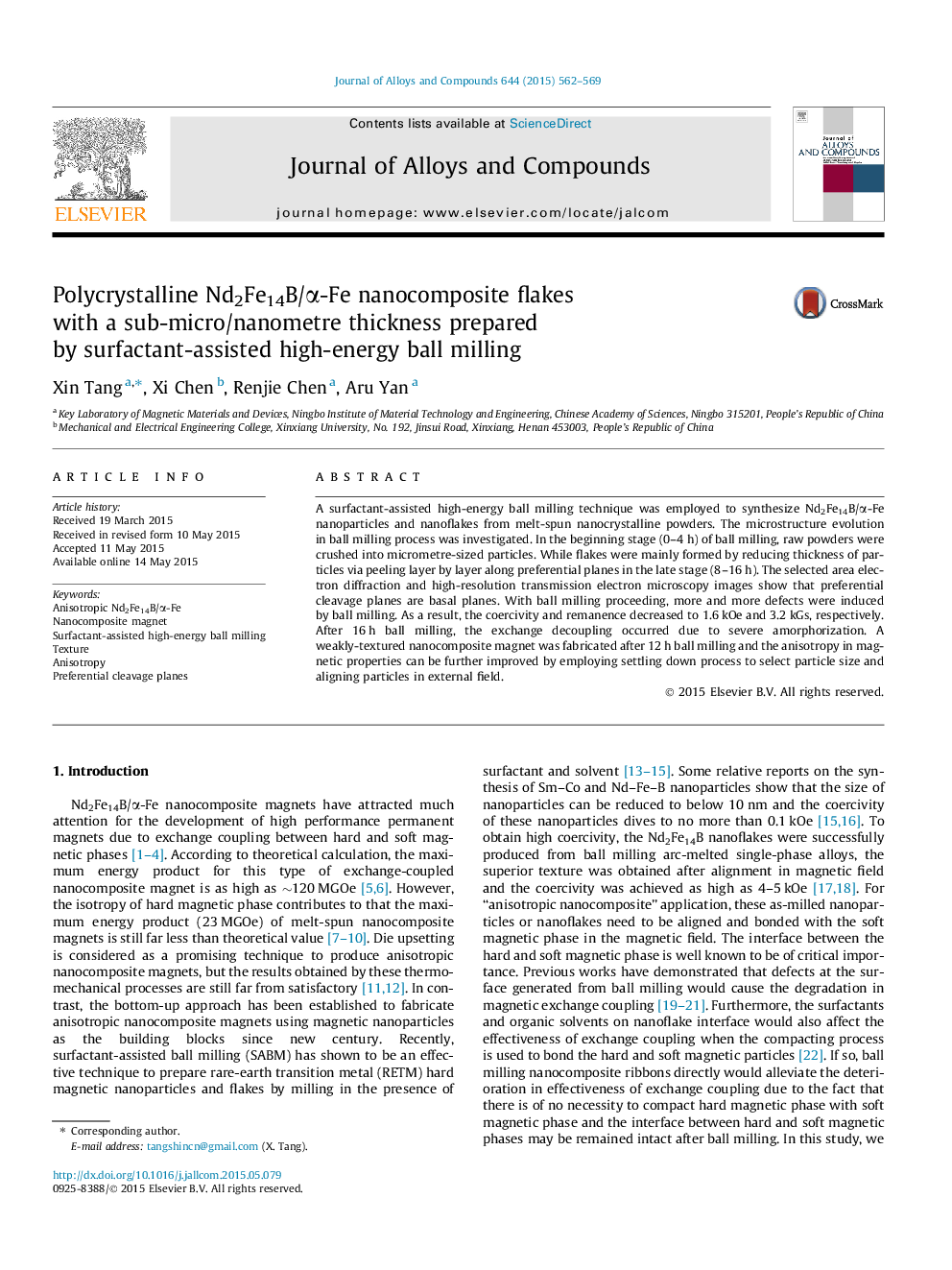| Article ID | Journal | Published Year | Pages | File Type |
|---|---|---|---|---|
| 7998682 | Journal of Alloys and Compounds | 2015 | 8 Pages |
Abstract
A surfactant-assisted high-energy ball milling technique was employed to synthesize Nd2Fe14B/α-Fe nanoparticles and nanoflakes from melt-spun nanocrystalline powders. The microstructure evolution in ball milling process was investigated. In the beginning stage (0-4 h) of ball milling, raw powders were crushed into micrometre-sized particles. While flakes were mainly formed by reducing thickness of particles via peeling layer by layer along preferential planes in the late stage (8-16 h). The selected area electron diffraction and high-resolution transmission electron microscopy images show that preferential cleavage planes are basal planes. With ball milling proceeding, more and more defects were induced by ball milling. As a result, the coercivity and remanence decreased to 1.6 kOe and 3.2 kGs, respectively. After 16 h ball milling, the exchange decoupling occurred due to severe amorphorization. A weakly-textured nanocomposite magnet was fabricated after 12 h ball milling and the anisotropy in magnetic properties can be further improved by employing settling down process to select particle size and aligning particles in external field.
Related Topics
Physical Sciences and Engineering
Materials Science
Metals and Alloys
Authors
Xin Tang, Xi Chen, Renjie Chen, Aru Yan,
